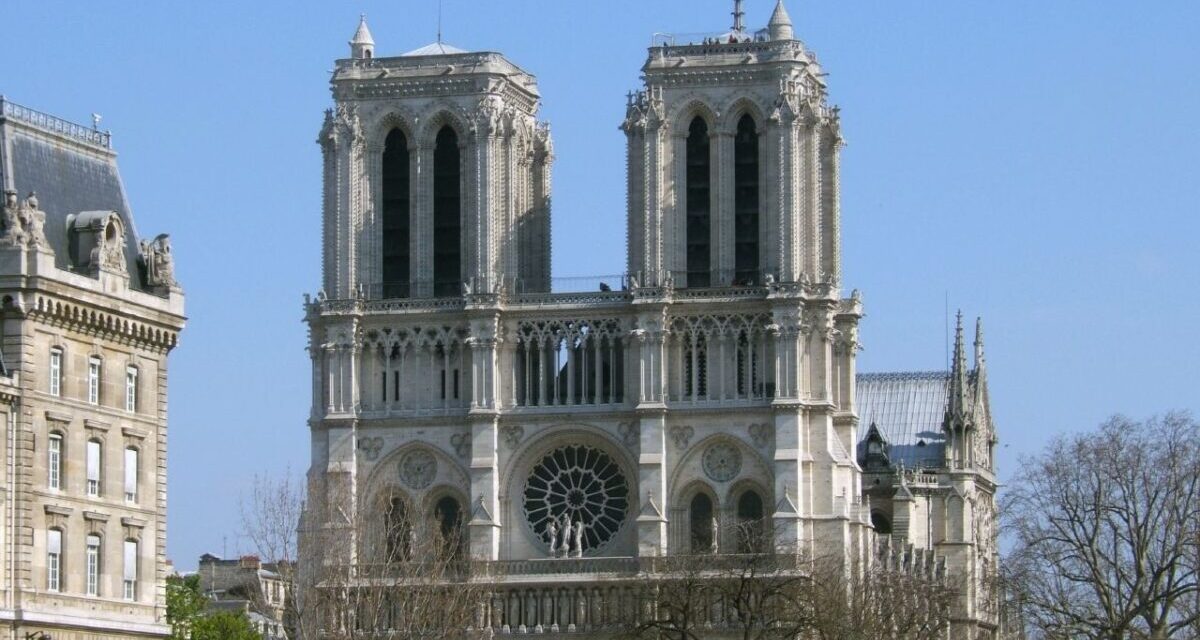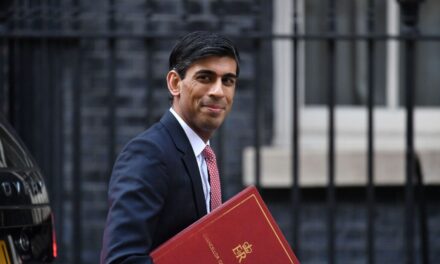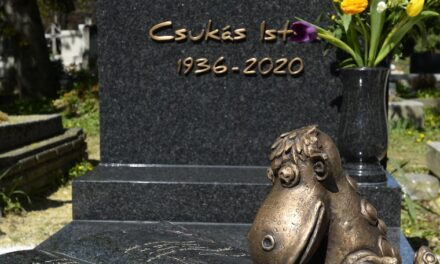During the Summer Olympic Games in Paris (between July 26 and August 11), the Hussar tower of Notre Dame will already be freely visible in the sky of Paris, and the cathedral is expected to open to the public on December 8.
The fifth anniversary of the burning of the Notre-Dame Cathedral in Paris promises to be very quiet: it is expected that neither the Minister of Culture Rachida Dati nor the President of the Republic Emmanuel Macron will visit the cathedral under reconstruction.
The focus is now on December 8 - writes Le Figaro - when Macron will ceremoniously hand over the building to Laurent Ulrich, the Archbishop of Paris responsible for the cathedral, and the Christian faithful and the general public will finally be able to enter the "spectacularly restored" ” premises.
Christianity as a whole, which is considered the most persecuted religion in the world, and those committed to the basic values of European civilization, regardless of their worldview, were stirred by the news on April 15, 2019: the roof structure of the Notre-Dame Cathedral caught fire in the night hours.
The fire raged for nearly 15 hours, consuming the roof structure of the Notre-Dame Cathedral in Paris, considered one of the symbols of European Christianity. The disaster even made the survival of the building doubtful.
The horrific fire, in which the famous hussar tower also collapsed, was extinguished only after 15 hours, on the afternoon of April 16, more than 600 firefighters, several large trucks and 18 hoses were mobilized.
The fire reduced the roof structure of the nave and the transept to ashes.
The falling hussar tower caused further damage, which led to the collapse of the cross vault of the transept and the weakening of the main towers of the building.
Le 15 avril 2019 à 18h20, un incendie se declara à la cathédrale Notre-Dame de Paris, et dura près de de 15 h.
Il débuta au niveau de la carpente (à la base de la flèche) consists of 500 tonnes of wood from 1300 chênes, or 21 ha of forest.
At 7:50 p.m., the flèche collapses. pic.twitter.com/V043wqs55P— Tu sais pas quoi?! (@tuCpakoa) April 15, 2021
The centuries-old roof structure, which covered one of the oldest churches in Paris (the foundation stone was laid by Pope Alexander III in 1163, and the cathedral was then continuously built until 1345), contained about 1,300 oak trees, which is equivalent to 21 hectares of forest.
According to the testimony of the Facebook posts created at the time, the image of the burning Notre-Dame evoked for many people the connection that was most clearly tweeted by Gilles Lebreton, a member of the European Parliament of the National Consolidation (RN), on the social site now called X: "The Notre-Dame: this unfortunately symbolizes too well the state of France under Macron". The politician - wrote the weekly Marianne, which quoted the note in 2019 - later deleted this post.
Christine Boutin, the honorary president of the Christian Democratic Party, struck a similar note, wondering "how come we don't see the connection between the burning of a masterpiece of France's religious heritage and the activities of the President of the French Republic?"
The Unef student union, infamous for its far-left, blinded Islamist views, almost celebrated the event in its Twitter posts: Majdi Chaarana joked with Quasimodo, Moroldo, the head of Unef in Bordeaux, mocked the Notre-Dame cathedral's tweet about Ash Wednesday, while Hafsa Askar, who is also a member of the national office , boasted: "I'm not interested in Notre-Dame Cathedral because I'm not interested in French history!" He added:
"They will cry over the pieces of wood!" According to him, this is "the delusion of the little white man who loves the French identity too much".
Many Muslim members of social networking sites, who call themselves the "Muslim sphere" of the net, have made jokes about the Notre-Dame Cathedral disaster. Others declared the fire to be Allah's punishment for Christians: for days, hundreds of posts with this content were made in France.
In the meantime, the authorities, after a short hesitation, decided that the entire Notre Dame would be renovated in a spirit true to the times. At that time, it was difficult to estimate the costs of the works. Fortunately, there was no shortage of money.
The French Audit Office recently published the astronomical sum spent on construction: 846 million euros, which came mainly in the form of donations.
The sums of money come from 340,000 different donors in nearly 150 countries. The three wealthiest families in France, the Arnault, Bettencourt and Pinault families, sent more than half of all donations to the designated accounts. Our country also stood up for itself: the city of Szeged, for example, offered 10,000 euros for the reconstruction of the cathedral.
In contrast to the country's division, the participants in the restoration work are characterized by spectacular unity. "After five years, a miracle is happening in Paris," wrote one of the Hungarian Catholic newspapers.
Rémi Fromont, one of the cathedral's three chief architects, told Le Figaro that "the pressure on the renovation workers is increasing, every hour will count".
Since 2019, as the works have progressed, "representatives of some trades, having finished their work, have already left the site, others have now joined it; but the unity, pride, mutual aid and cohesion that make up the spirit of Notre-Dame are present as never before," says Philippe Jost, president of the public institution responsible for the building's restoration.
The work was divided into three different stages, according to an article on the news page of the French TV channel TF1. The first phase, the most delicate, was already completed in 2021. The goal at that time was to secure and protect the structure of the building.
Specialists prevented the building from collapsing, removed the damaged materials and treated the lead contamination that fell on the front yard and surrounding buildings. The final cost was 550 million euros.
The second stage included the reconstruction of the hussar tower and the restoration of the oak structure of the slab. It was a "pharaoh's enterprise", with the involvement of hundreds of skilled workers and masters: carpenters, glassmakers, masons and a crowd of crane operators worked to restore the burnt roof structure of the cathedral, which has accompanied the historical past of Europe.
The extremely demanding works cost around 152 million euros.
The cross was returned to the top of Notre-Dame's hussar tower on December 6, 2023.
This year, on December 8, the building will be opened for Masses and, of course, for tourists and interested parties.
But the works, as indicated by the public institution also responsible for the construction, will continue for several more years. Of the total of 845 million euros collected thanks to 340,000 donors and sponsors, barely 700 million euros will be spent by the end of December 2024.
The remaining 146 million euros will be spent on the third phase of the works: this is when the external part of the cathedral will be renovated, as part of the building was also damaged during the fire. The semicircular buttresses supporting the choir and the nave must be strengthened. Also in need of strengthening is the sacristy, where the liturgical vestments, tools and materials needed for the masses are traditionally kept - in the case of Notre-Dame, these represent a special value, often due to their museum antiquity and ideological value.
In this third phase, the complete restoration and renovation of the apse, the sacristy, the presbytery and the large roses (which were not affected by the fire) are planned.
The schedule has not yet been determined, but it is certain that Notre-Dame will be reborn, and thus construction will continue for several more years.
The tender plan announced by Macron last December and supported by the Archbishop of Paris sparked a huge protest, not only moving the Christians of France: the damaged stained glass windows in the six chapels of the south aisle of the main nave would be restored not with the original decoration, but in a modern form.
The Minister of Culture, Rachida Dati, established an arts committee that issued a call for proposals.
Entries that can be submitted by May 24 must be figurative and related to Pentecost and the Holy Spirit. The winning pair will be selected in the fall so that the prototype can be presented to the public when the cathedral reopens.
Since the tender was announced, many people have protested against the plans. They also circulated a petition, which has so far been signed by 140,000 people. Opponents of the plan strive to preserve the legacy of Eugène Viollet-le-Duc: the former master glassmaker designed the stained glass windows of the six chapels between 1855 and 1865. The new windows are planned to be installed in 2026.
Cover image: The Notre-Dame
Source: Wikipedia












